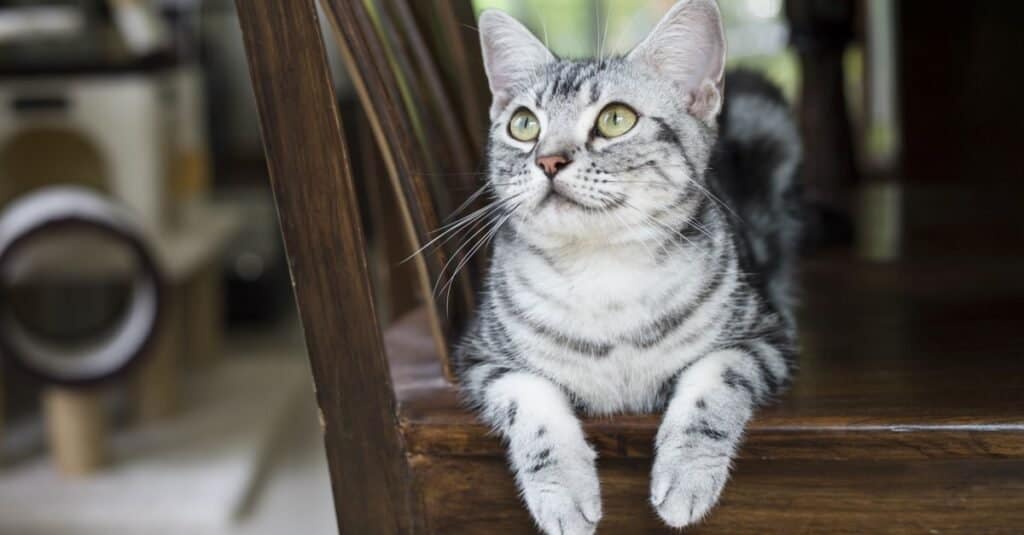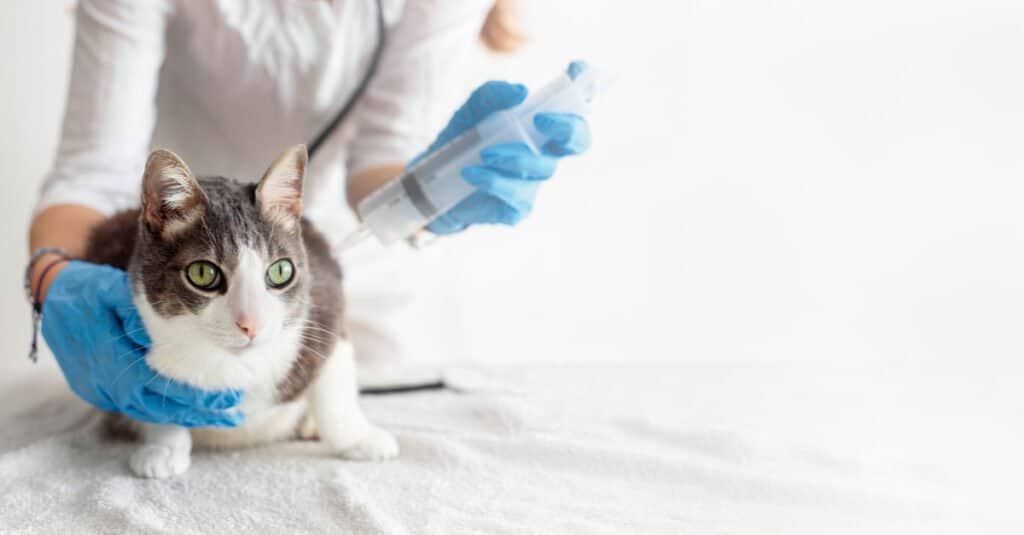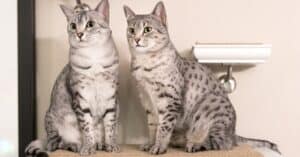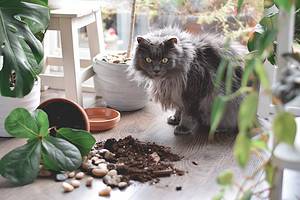Imagine a day in which you are pampered, able to spend as much time alone as you desire, and generally unwind. The domestic cat’s existence is pretty much like this. Observing a cat lying in the sun, softly purring, it’s easy to wonder, “How do they do master the art of Zen?”
People in ancient Egypt believed cats were mystical creatures that could bring them good fortune. As a way of honoring their prized pets, affluent families lavished them with gifts like jewelry and gourmet food. Some cats were even buried with their owners. Today, cats are among the most popular pets. So you. might be wondering just how long cats can live. In the article below, we’ll dive into the oldest living cats still alive today.
Who Is The Oldest Domestic Cat To Ever Live?

Cats can live to surprisingly old age, some cats have lived past 30 years old!
©Sharomka/Shutterstock.com
Did you know the lifespan of a domestic cat is typically between 12 to 14 years? This of course depends on factors such as their health, what they eat, and their environment. There are exceptions, though, as some cats live to be much older.
As an example, the oldest cat in recorded history is a cat named Crème Puff who passed away in 2005 at the age of 38 years and 3 days!
Then there was Baby, a 38-year-old black domestic shorthair cat who passed away just shy of Crème Puff age in 2008.
Is a cat’s long life due to its playful yet tranquil nature? Maybe it’s a factor. Genes play a role. Also, female cats live longer than male cats, neutered cats live longer than non-neutered cats, but crossbred cats live longer than purebred cats.
Cat Breeds That Live The Longest

Siamese cats are one of the longest-living breeds
©Serge75/Shutterstock.com
There aren’t any breed-specific traits that make cats live longer. Rather, some breeds are more prone to sickness or health issues, reducing a cat’s lifespan.
The most significant aspect of a cat’s longevity is that it is an indoor cat, according to all experts. If cats are allowed outside, they are more likely to get hit by cars, get into fights, and/or get diseases.
In addition, spaying or neutering your cat enhances lifespan. Spayed or neutered cats have fewer behavioral disorders and are less prone to infections, degenerative diseases, and premature death.
Keeping this in mind, certain breeds statistically live longer than others. For example, the Siamese cat has the greatest lifetime, 12-20 years, although some live longer. Then the Burmese cat. They are a Siamese cross and are known to live 16-18 years. The Savannah cat, with a lifespan of 12-20 years, is the third longest-living breed.
How Old Is The Oldest Cat Alive Today?

Cats need high levels of care as they reach advanced ages
©chanon sawangmek/Shutterstock.com
Many say a 34-year-old Siamese cat in Chanthaburi is the world’s oldest cat alive today. “Great Grandmother Wad” is still mobile, but has problems walking and remembering, her owner said. Despite her best efforts, her teeth have lost some of their strength. Fish heads and fish with rice, two of her favorites, have been replaced by soft canned food.
As of recently, an Oregon cat is in the running to become the world’s oldest cat. Charly Briggs contacted Guinness World Records to check if her cat Samm would be the world’s oldest living cat at the age of twenty-six. Samms veterinarian has certified that he is 26 years old and in good health. To have Samm formally recognized by Guinness World Records, Briggs said she is in the process of submitting the required evidence to them.
Guinness has a record for the oldest living cat siblings. They are named Pika and Zippo. Their entire lives, Pika and Zippo have been cared for by the Teece family in London, UK. It is estimated that the felines are a combined age of 43 years old. They are twins so that makes each of them twenty-one and a half years old.
Currently, no kitty holds the title of the world’s oldest cat living. The most recent cat was Corduroy back in 2015, but he was declared dead after he went missing from his home in 2016. Corduroy was twenty-seven years old.
Tips to Keep Your Cat Healthy

©AssiaPix/Shutterstock.com
Genetics play a part in feline longevity, just as they do in humans. However, this may only account for 20% to 30% of your cat’s life expectancy. Much more could be done to improve one’s health through exercise, food, socialization, and the surrounding environment.
Here are The top three tips for keeping your cat healthy:
1. Diet
Obesity, diabetes, and pancreatitis in cats can be avoided with proper nutrition. Food for cats must have all essential amino acids, although portion control is essential. The ideal combination for lifespan is a good diet and regular exercise.
2. Exercise
Have you ever given your cat catnip? Some don’t like it, yet others can’t get enough! Anything that engages their minds and keeps them fascinated is stimulating. Any laser or cat toy can be a great workout. There’s nothing cuter than a cat frantically trying to “catch” that red dot. Curiosity will get your feline to chase a paper ball if you let them!
3. Attention/Affection
Make sure your cat knows just how much they hold a special place in your heart! Not all kitties like to cuddle, or even be handled much, so knowing your cat’s temperament and catering to it accordingly is key to not inducing stress.
In today’s world, cats are living longer and enjoying their senior years to the fullest. If you give your cat nutritious food, lots of exercise, and plenty of TLC, he or she should be able to live a long and happy life with you!

The name ‘Ragdoll’ is derived from the tendency of individuals from the original breeding stock to go limp and relaxed when picked up.
©madeinitaly4k/Shutterstock.com
Fun Facts About Cats and Their People
- The most popular cat breed in the U.S. is the ragdoll – probably because they are bred to be cuddly.
- Cats live in more than 45.3 million U.S. households.
- Vermont has the highest percentage of cats at 45%. Maine is second at 44%, and West Virginia and Indiana are tied for third with 38%. Many of the cat-owning states are colder.
- Millennials are the age group with the largest number of pet owners at 32%.
- Most Americans get their cats from animal shelters or the Humane Society – while dogs are typically purchased from a breeder.
The photo featured at the top of this post is © Irina Kovynyova/Shutterstock.com
Thank you for reading! Have some feedback for us? Contact the AZ Animals editorial team.






